
Casablanca, 1943: North Africa is in turmoil! Nazi Germany, through its spies and undercover operatives, hopes to solidify its hold on the region and undo Allied gains. At the center of the plot is Sultan Abou ben Ali, whose leadership of the regional Sheiks makes him an important player, and who is staying at a hotel in the city while conferring with his council. After learning that the Germans plan to assassinate the Sultan, journalist Janet Blake goes to warn him, but unbeknownst to her the real Sultan is abducted and replaced by an imposter, German Baron von Rommler. From the first chapter, the “Sultan” is actually von Rommler, with the real Sultan held prisoner in a basement lair accessible by a hidden staircase. Once secret agent Rex Bennett, who had been in Germany posing as an officer, arrives, he, Janet, and the French police captain Pierre LaSalle meet with the “Sultan” and reveal their plans to him, never suspecting that he himself is the German agent they are searching for!

The German plan involves the Dagger of Solomon, a genuine artifact venerated by the Arab population, and the key to an ancient tomb; the Germans have forged a scroll commanding the Arabs to give their loyalty to the “people of the Swastika,” to be planted in the tomb when it is opened. Rex knows this and even has the dagger and scroll in his possession for a time, but can he convince the Sheiks that they are being misled when their own Sultan cannot be trusted? It’s all in a day’s work for the Secret Service in Darkest Africa!
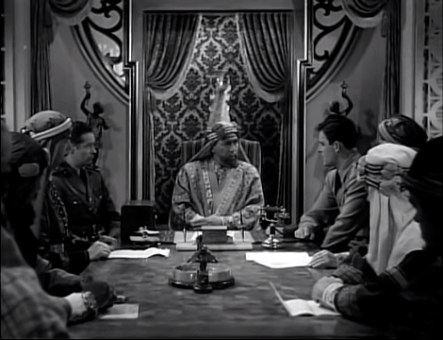
The “venerated artifact” plot device has seen use in some other serials: recall the scepter of Genghis Khan in Drums of Fu Manchu and the Sword of Tongu in Jungle Queen. The idea that colonized populations would be swayed to rebellion by a mystical or nationalistic totem was clearly one that exercised the imaginations of pulp writers in the early 20th century, or at least promised a useful hook for adventures. Combined with its Nazi villains, it’s not surprising that Secret Service in Darkest Africa would be promoted in the 1980s as an obvious inspiration for Raiders of the Lost Ark (“Nazi raiders steal a lost Arab treasure!” proclaims the cover of the VHS copy I watched). In this case, however, the plot to fool the Arabs fizzles out quickly–by the second chapter the Sheiks recognize the scroll as a forgery, having never made it to the sacred tomb where it was to be “discovered”–and there’s very little archaeology or mysticism in this serial. The North African setting is full of colorful locations–a grotto, an old castle, as well as the more modern city of Casablanca with its diverse inhabitants–but it’s neither a treasure hunt nor a ghost story.

But that’s okay. What we get instead is a series of von Rommler’s (Lionel Royce) attempts to steal or sabotage Allied supplies, troop carriers, and humanitarian aid, leading to his biggest score, a diplomatic pouch containing all the details of the Allies’ military plans in North Africa. Von Rommler maintains his cover as the Sultan, aided by his secretary Muller (Kurt Kreuger–it’s surprising how long it takes Rex and Janet to become suspicious of the Sultan’s obviously German aide) and right-hand man Wolfe (Frederic Brunn), who does most of the dirty work. Meanwhile, the real Sultan (also played by Royce) is held in chains in the secret basement headquarters, offering withering commentary as von Rommler’s schemes are repeatedly thwarted by Rex Bennett and his allies: “You are reckoning without Rex Bennett,” he says in a typical exchange. “Death is the only real escape for his enemies.”
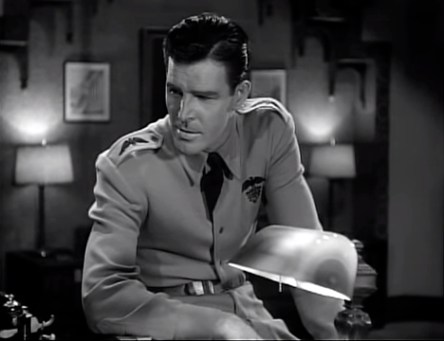
The Sultan is right: Rex Bennett (Rod Cameron) is the kind of square-jawed one-man army who can foil saboteurs and spies (almost) single-handedly. (Cameron had already played Bennett once in another serial, G-Men vs. The Black Dragon, the same year.) Bennett is first seen in Berlin, undercover as a Nazi officer (in fact the officer credited for killing Rex Bennett!); just before taking off for Casablanca, he gives the airfield attendant a tip “as a reward for your efficiency”–a badge that says “God Bless America”! Once in North Africa, Rex solves many problems with his fists or a gun; there is a lot of Republic-style fisticuffs action, as well as a number of stunts and explosions. Buildings have a tendency to blow up or collapse around Rex and his pals, and there are a few chases, but the fights are the real draw. Director Spencer (Gordon) Bennet has shown in some of his other serials a fondness for close-up shots of approaching fists or thrown objects during fight scenes, but he really goes crazy here: there are enough of these proto-GoPro shots that one might think they were from a 3-D movie.
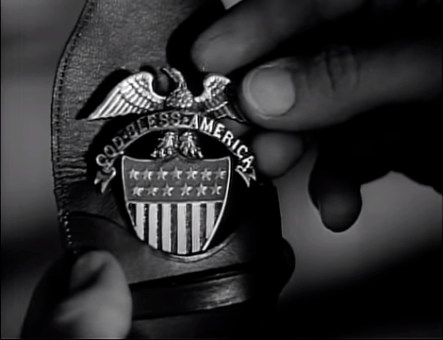
Rex Bennett is not only a man of action, however, as he also puts together clues to decide where to go next. My favorite involves LaSalle, captive, punching circular holes in a pair of playing cards, so that when Rex and Janet find them they recognize the holes as Os and correctly guess that LaSalle has been taken to the Oasis Café–“O aces,” get it?
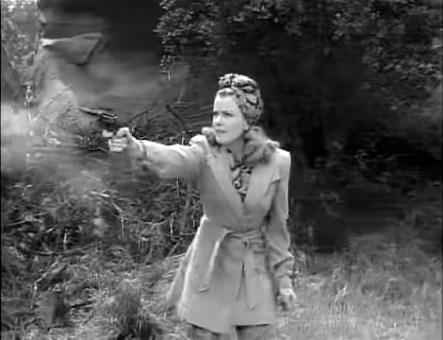
Janet Blake is another of the era’s gutsy female reporters, stopping at nothing to get a story, and the role seems to have been a change of pace for Joan Marsh, who had spent the ’30s as a singing and dancing starlet (“In lighter fare her characters tended to have names like Beanie, Toots or Cuddles,” according to imdb.com). Like many of her breed, Janet is just as capable as the top-billed hero (she would have to be, just to keep up), flying a plane and picking up a gun when necessary.
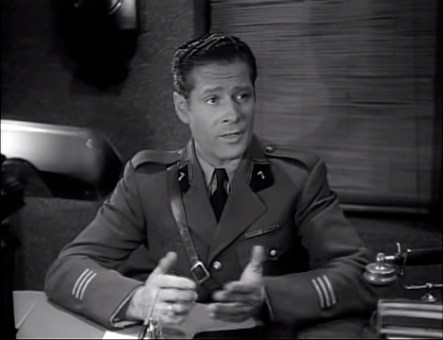
Rounding out Rex Bennett’s allies, Captain LaSalle is played by Duncan Renaldo, best known for playing the Cisco Kid later in the ’40s and ’50s; even by 1943 he had a long list of credits, largely playing Latin roles in Westerns and adventure films, including a few other Republic serials (he played Zamorro in The Painted Stallion). LaSalle is a capable brother-in-arms, but he doesn’t have much personality beyond “French” (and in case we forget, the burst of “La Marseillaise” we get every time there is an exterior shot of the French Diplomatic Headquarters serves to remind us).

Secret Service in Darkest Africa doesn’t feature Nazi imagery quite as much as Jungle Queen, given the Nazis’ covert actions, but what is used is memorable. There is a fantastic transition in which the Swastika in von Rommler’s lair spins around like something from the Batman TV show, warping us to a similar office in Berlin, but nothing like that happens again. There are a couple of uniformed Nazis, especially Luger, the officer who mans von Rommler’s hidden basement hideout, but von Rommler spends most of his time disguised as the Sultan, and Wolfe likewise goes about in Arab burnous and keffiyeh, wrangling agents who are either genuine Arabs or Germans in disguise.

What I Watched: Secret Service in Darkest Africa (Republic, 1943)
Where I Watched It: A two-tape VHS set from Republic Pictures Home Video (Both the packaging and the opening credits have it as Manhunt in the African Jungles, the title under which this serial was rereleased in 1954; neither title is quite accurate, as it doesn’t take place in the jungle and the North African setting isn’t really the sub-Saharan interior usually meant by the obsolete phrase “Darkest Africa.”)
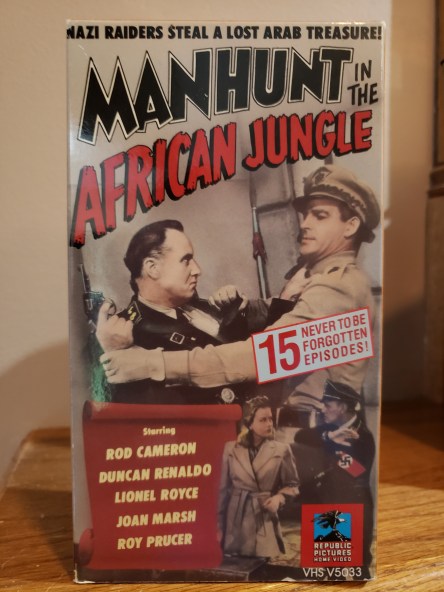

No. of Chapters: 15
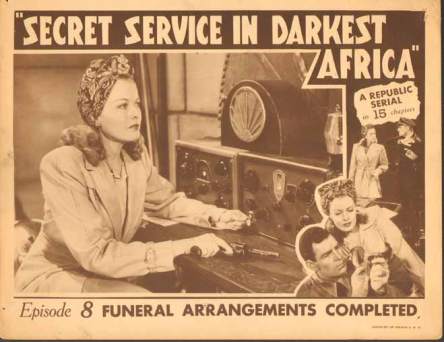
Best Chapter Title: “Funeral Arrangements Completed” (Chapter Eight) I’m usually critical of prosaic chapter titles, but the cut-and-dried character of this one makes it more ominous in my opinion, like a subtle threat. It reminds me of the grim but polite finality suggested by the title of the 1964 paranoid thriller No Survivors, Please. The “funeral arrangements” are actually for Wolfe, who has taken a Japanese neurotoxin to slow his heartbeat and thus feign death, but the implication is clear: for standing up to the Nazi war machine, Rex Bennett has signed his own death warrant.
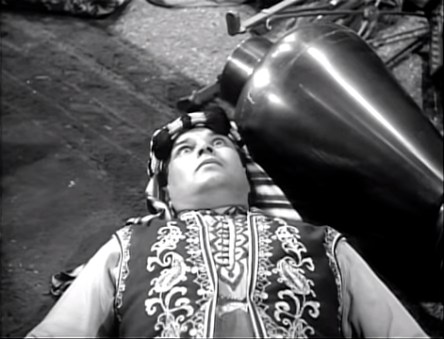
Best Cliffhanger: Secret Service generally stays within the bounds of realism (up to a point), but what serial would be complete without a secret wonder-weapon? In Chapter Ten (“Racing Peril”), Wolfe and his cronies managed to steal an Allied “munitions disintegrator,” a ray-like device that detonates any explosive at which it is directed, from the cartridges in Rex Bennett’s rifle to the payload of a bomber in the air. The Allies plan to use this device to eliminate enemy ammunition caches, but von Rommler and Wolfe see the true potential of the disintegrator as a weapon, and in Chapter Eleven (“Lightning Terror”) they set it up in a fishing cabin to wipe out the fleet of planes scheduled to deliver Allied leaders for a conference.

While the disintegrator warms up and Wolfe waits for the planes to fly within range, Rex Bennett bursts into the cabin and the fight begins. During the melee, the disintegrator is knocked around and it swivels toward a stack of crated hand grenades, setting them on fire. As in many cliffhangers, the excitement is built up by cross-cutting between the fight inside the cabin, the burning grenades, the approaching planes, and the clock showing how little time is left before their destruction. At the very end of the chapter, Rex, having put Wolfe on the run, turns the disintegrator away from the planes, but the grenades blow up the house, seemingly before he can make his own escape.

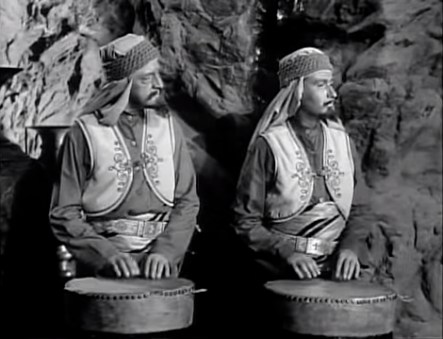
Annie Wilkes Award for Most Blatant Cheat: Secret Service includes a couple of classic serial-style deathtraps, including a “Pit and the Pendulum”-inspired “execution wheel” to which Rex Bennett is bound, complete with drumroll, in Chapter Twelve (“Ceremonial Execution”). Bennett gets out of that one fairly, however, so the biggest cheat is found in Chapter Seven (“Torture Dungeon”): Janet Blake has been kidnapped by Wolfe and taken to a “Moorish castle,” the base of a Nazi intelligence officer (clearly the same set as the Berlin Gestapo office in Chapter One). Hitler is scheduled to give a speech proclaiming victory in North Africa, and Janet is to deliver a pre-written report confirming the Fuehrer’s words–compelled by force, if necessary.

The instrument of persuasion is a huge stone slab on a hinge, lowered to crush the noncompliant (a few splintered bones can be seen beneath it). Of course Janet refuses to be made party to propaganda, so she is knocked unconscious and thrown beneath the slab, just before Rex bursts in to rescue her (Rex does a lot of bursting in). During the fight, Wolfe accidentally hits the lever lowering the slab, and it closes on her still-prone body. Seems like the end for Janet, no? But wait! At the beginning of the next chapter, Janet wakes up and leaps out of the trap before the stone even begins moving. Cheat!
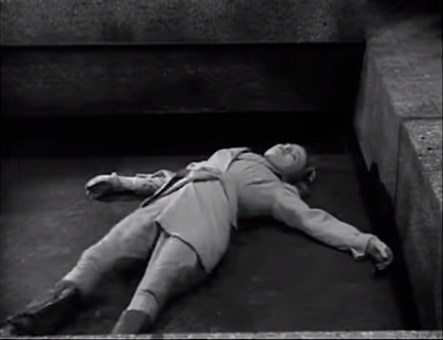
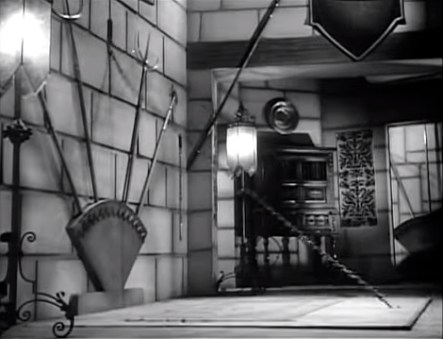
Sample Dialogue:
von Rommler: When you see Rex Bennett, tell him it was Baron von Rommler who finally defeated him.
Rex Bennett (entering): Your trip to Berlin is cancelled, von Rommler.
–Chapter Fifteen, “Nazi Treachery Unmasked”

What Others Have Said: “Not blending very well with these colorful, but still legitimate, chapter-play elements is an oversupply of hokum, commencing with one of several contrived sword fights. Discovered in Gestapo headquarters, the hero gives the full Errol Flynn treatment to a duel with a German instructed to take him prisoner. With time at a premium and a plane waiting for him nearby, Bennett disarms the Nazi and then flips his weapon back to his enemy so that the duel can continue. After finally disposing of his opponent, hero Rex takes some more time to pick up a sword and hurl it into a portrait of Adolf Hitler.” –Raymond W. Stedman, The Serials: Suspense and Drama by Installment (I don’t know what to say to this other than that you’re either on board for this kind of thing in the serials or you’re not; for his part, William C. Cline in Serials-ly Speaking names Secret Service in Darkest Africa “one of the most exciting chapterplays ever filmed.” Different strokes, etc.)

That concludes Fates Worse Than Death for this summer; thanks for reading, and stay tuned! You never know what and when I might decide to post again–I certainly don’t!